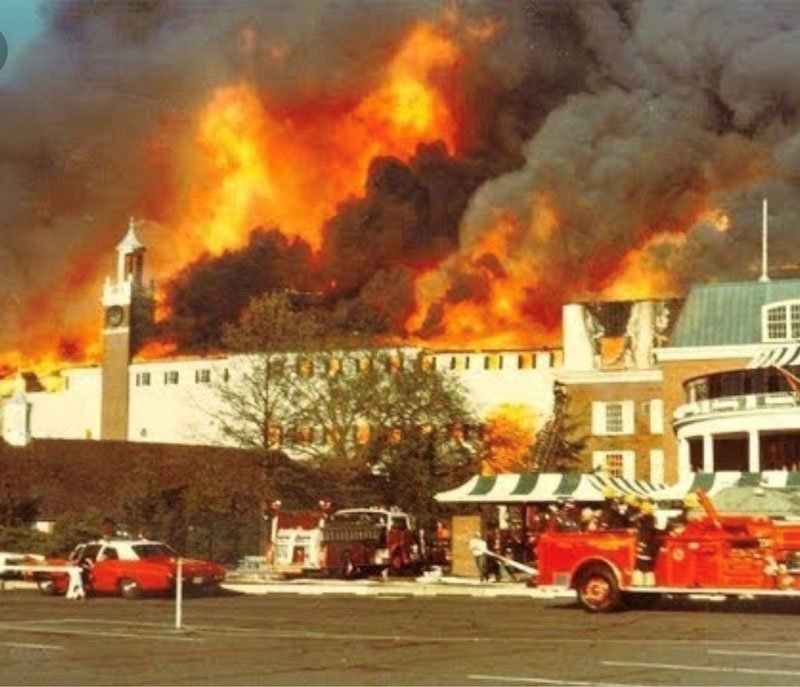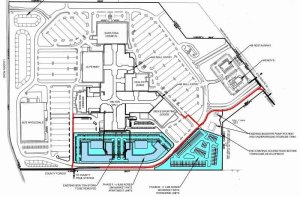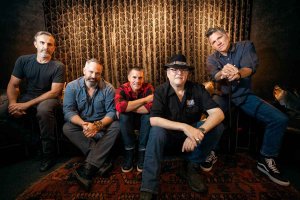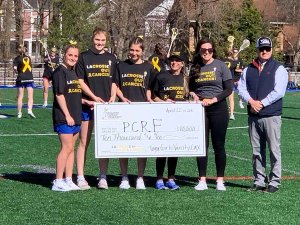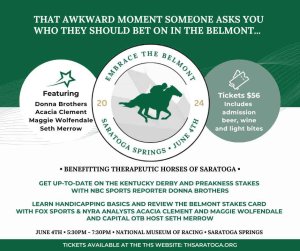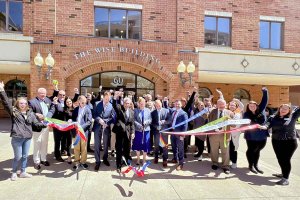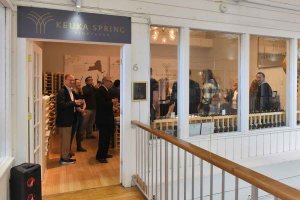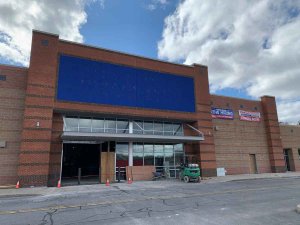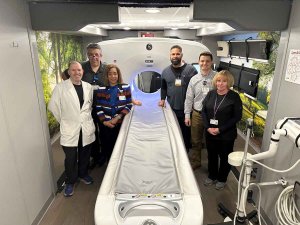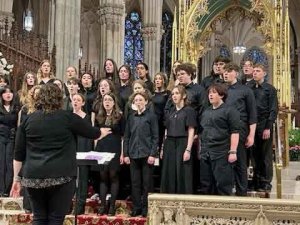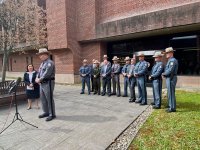... Part Three of a Three Part Series ...
THE END OF AN AREA
The 1970’s would not be kind to the New Jersey track owners. Garden State Park patrons did get a look at the immortal Secretariat when he took the Futurity there in 1972. Things went downhill soon after that. Gene Mori passed away a year later. His son took over as President of the track. Four years later disaster struck. On April 14, 1977, a fire broke out in the Clubhouse dining room kitchen. After the running of the sixth race, smoke could be seen billowing from the track’s clubhouse. Within minutes the wooden stands were engulfed in flames. Thirty-five years of horse racing history was soon reduced to ashes. New Jersey racing had suffered a devastating blow.
A decade later the track would arise from the ashes. Bob Brennan, a New Jersey banker, had big plans for his new Garden Park. This version was everything modern technology could offer.
Unfortunately, the charm of the old track just wasn’t there. It was a new era. The gambling dollar had spread to the casinos that were close by. Pennsylvania was in the racing business by then. A new track was built in the suburbs of Philadelphia. The New Garden State Park was being assaulted from two sides. Her demise was just a matter of time. Just fifteen years after the grand opening of the new facility, the end came. The track that had led New Jersey to the top rung of the horse racing universe faced the wrecking ball.
Less than sixty miles away on The Black Horse Pike, the hammer was about to fall on Atlantic City Racecourse. John Kelly had been the first of the trio of the pioneers of the Golden Triangle to pass away. He left the scene in 1960. The Levy family who were part of the original owners of the track gained control of the operation.
In 1976 casino gambling was legalized in the Garden State. Unfortunately for Bob Levy, Atlantic City by state law would receive all the casino permits. The first, Resorts International opened its doors to the public two years later in 1978. Atlantic City Racecourse was doomed. The death came painfully; gamblers flocked to Atlantic City Hotels for the fast action. They were comped rooms, meals, and alcoholic beverages. Why go to the track? Attendance and mutuel handles were bled dry. All types of gimmicks were tried to keep the track in business. The thriving years were over. The once mighty Atlantic City Racecourse would linger on to millennium. The old stands are still visible from the historic Black Horse Pike. They are just a shadow of what was once a premier destination on the roadmap of the American Turf.
THE TRADITION LIVES ON
With the demise of both Garden State and Atlantic City, the only first-class racing facility left in New Jersey is Monmouth Park. The “Resort of Racing” was in a much better situation to survive then its Golden Triangle partners. Monmouth Park to this very day is one of the finest horse racing venues ever built in the country. Amory Haskell left no stones unturned. Elegance abounds in all aspects of the grounds. One marvels at the beauty of the architecture that make up the grandstand and clubhouse. Overflowing flower boxes add to the appeal. The paddock is spacious. The horses walk around a circle surrounded by a perfectly contoured white wooden fence. Inside the walking area, beech trees, spectacular from years of nurturing add to the paddock’s splendor. The racecourse, a one-mile oval, is on a par with any in the country. A lush seven-furlong turf course was added in the early 1950s. When speaking of successful enterprises, the phrase “location, location, location” is often heard. Monmouth Park still has just that. Located in the shore town of Oceanport, the track is in the perfect location to take advantage of the population that migrates to the Jersey Shore in the summer months. For those who are further away, train service from all points north of Monmouth is offered to track patrons. For years day cruises made their way from New York City to awaiting busses that brought the big city crowd to the track.
Monmouth Park has been able to weave through all the changes that have been so challenging to the horse racing business. The track has adapted to the realities of the Twenty-first Century. Simulcast and now legalized sports betting have been instrumental to the continued financial health of the facility. The stands are no longer full. It is far removed from the days when the top owners, trainers, along with the rich and famous spent their summer afternoons at the shore’s famous destination. Despite the declines in attendance and on-track betting, Monmouth still stands as one of the handful of great American Racing Institutions.
To get a sense of the magnitude that the Golden Triangle reached in the decades after World War Two, the opportunity exists to this very day. Every Summer on a Saturday in late July Monmouth Park relives those long-ago days. The race named after its founder Amory Haskell attracts top billing in the headlines of The Daily Racing Form. Upwards of fifty thousand fans converge on the grounds to see the stars of the American turf perform their magic. The sights and sounds of the past reappear. Valet parking attendants hustle to park one car after another. Long lines of racetrack goers wait to get through the turnstiles. The dining rooms are full again. In the box seats many of the greatest names in the sport converse with their guests while waiting for the day’s main event. The stands are again packed to capacity. For those of us that can imagine, for this one day, it is 1967 again.
Monmouth is all that’s left of the of the once mighty Golden Triangle. It is a link to the past, a reminder of three men and their unwavering determination to put New Jersey on the horse racing map. They succeeded beyond their wildest dreams. Their legacy is cemented for the ages in the bygone era of the Golden Triangle when horse racing was without doubt the “Sport of Kings.”




